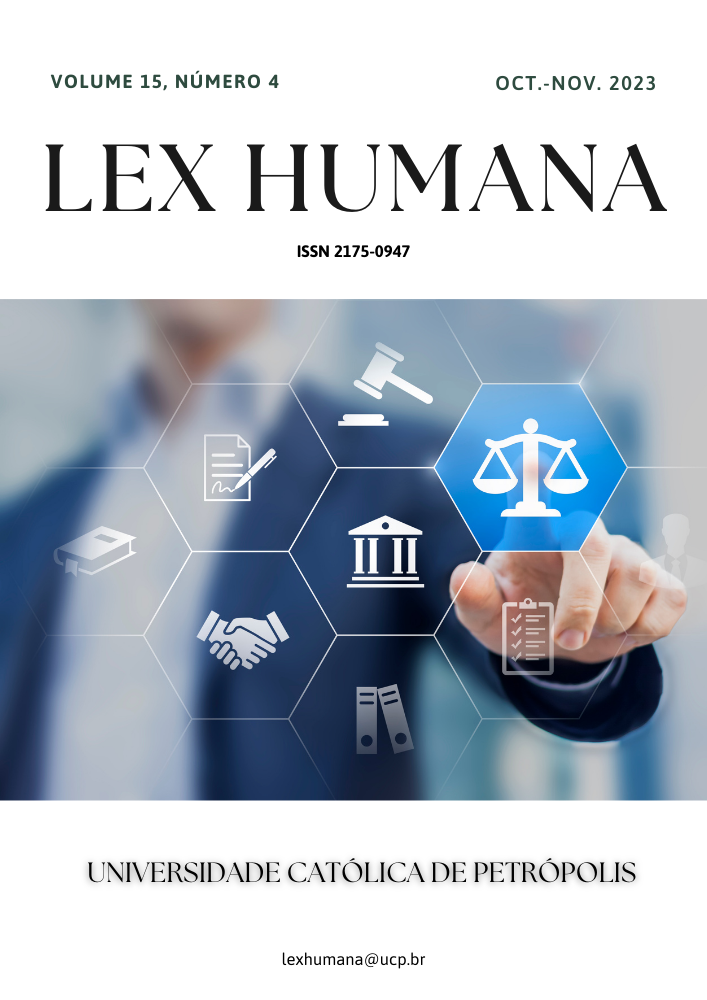Resumo
A controvérsia sobre a aplicação do Código Civil Uniforme tem sido notícia há mais de sete décadas e existe uma mistura de pontos de vista, em que, por um lado, o Código Civil Uniforme é apoiado invocando a integração nacional como motivo, enquanto que, por outro lado, a sua aplicação pressupõe que será utilizado como um instrumento para eliminar a identidade das minorias do país. Esta abordagem ativista do poder judicial é um raio de esperança, uma vez que se transformou em política comunal. Com o aumento do fundamentalismo da maioria e da minoria, o consenso secular está a diluir-se e a violência comunal está a aumentar. A incoerência das leis pessoais foi contestada em tribunal com base no artigo 14.º e, através do ativismo judicial, os tribunais viraram-se para a reforma destas leis. Este artigo salienta a desigualdade entre os sexos que persiste em diferentes leis pessoais no que diz respeito ao casamento e ao divórcio e o facto de a reforma das leis pessoais não ser uma forma adequada de garantir a justiça entre os sexos. O artigo também aborda o Código Civil Uniforme de Goa e as suas lacunas. Por último, o artigo apresenta um modelo de código relativo ao casamento e ao divórcio que pode ser adotado para elaborar um Código Civil Uniforme na Índia.
Referências
AGNES, F. FAMILY LAW VOLUME I: FAMILY LAWS AND CONSTITUTIONAL CLAIMS. 1.ED. OXFORD UNIVERSITY PRESS, 2011. 157P.
AGNES, F. Minority Identity and Gender Concerns. Economic and Political Weekly. v. 36, 2001. Available from: https://www.epw.in/journal/2001/42/commentary/minority-identity-and-gender-concerns.html. Access on: 16 January 2023
CHAKRABARTY, D. The Difference - Deferral of (A) Colonial Modernity: Public Debates on Domesticity in British Bengal. History Workshop Journal, v.5, 1993. Available from: https://doi.org/10.1525/california/9780520205406.003.0012 Access on 15 June 2023.
CHIBBER, S.A. Charting a New Path towards Gender Equality in India: From Religious Personal Laws to a Uniform Civil Code. Indiana Law Journal. v.83. 2008. Available from: http://ilj.law.indiana.edu/articles/83/83_2_Chibber.pdf. Access on 13 March 2023.
Constituent Assembly Debates, Dec. 1, 1948 7.64.90, 7.64.93 CONSTITUTION OF INDIA. Available from: https://www.constitutionofindia.net/constitution_assembly_debates/volume/7/1948-12-09.
Constituent Assembly Debates, Nov. 23, 1948 7.58.9145, 7.58.149 CONSTITUTION OF INDIA. Available from: https://www.constitutionofindia.net/constitution_assembly_debates/volume/7/1948-12-09.
CRAIG, P.; BGCRA, G.D. Eu Law: Text, Cases, And Materials. 4.ed. 2007.
French Civil Code, 2012
Gita Hariharan v. Reserve Bank of India, AIR (1999) SC 1149
Hindu Marriage Act, 1955.
Indian Penal Code, 1870.
INSIGHTSIAS. The Big Picture – Uniform Civil Code: What’s The Agenda?. 2015. Available from: http://www.insightsonindia.com/2015/10/16/the-big-picture-uniform-civil-code-whats-the-agenda/. Access on: 7 April 2023.
IYER, V.R.K. THE MUSLIM WOMEN (PROTECTION OF RIGHTS ON DIVORCE) ACT. Eastern Book Company, 1987.
JAIN, M.P. INDIAN CONSTITUTIONAL LAW.7. ED. 2015. 1430P.
JAMIL, N. Is Goa Civil Code the Answer to India’s sexist laws, FEMINISM IN INDIA. 2018. Available from: https://feminisminindia.com/2018/11/09/goa-civil-code/. Access on 14 March 2023.
John Vallamattom v. Union of India, (2003) 6 SCC 611,
Jose Paulo Coutinho v. Maria Luiza Valentina Pereira, (2019) SCC Online SC 1190
KISHWAR, M. Pro Women or Anti Muslim, The Shah Bano Controversy. Manushi. no.32, p.12, 1986.
MAHAJAN, G. Why the West offers no models for a Uniform Civil Code. 2017. Available from: https://timesofindia.indiatimes.com/india/why-the-west-offers-no-models-for-a-uniform-civil-code/articleshow/60522634.cms. Access on: 23 July 2023.
MASHHOUR, A. Islamic law and gender equality- Could there be a common ground?: A study of divorce and polygamy in sharia law and contemporary legislation in Tunisia and Egypt. Human Rights Quarterly. v.27. p. 568. 2005. Available from: https://www.jstor.org/stable/20069797?seq=1.
Mohd Ahmed Khan v. Shah Bano Begum and Ors, AIR 1985 SC 945.
MUSTAFA, F. Explained: Why Goa’s Civil Code is not as uniform as it is made out to be. 2021. Available from: https://indianexpress.com/article/explained/why-goas-civil-code-is-not-as-uniform-as-it-is-made-out-to-be-7279365/. Access on: 18 July 2023.
National Textile Workers v. PR. Ramkrishnan and Others, 1983 AIR 75.
PARASHAR, A. WOMEN AND FAMILY LAW REFORM IN INDIA: UNIFORM CIVIL CODE AND GENDER EQUALITY. Sage Publications, 1992. 62p.
Portuguese Civil Code, 1867
Report No. 21, Law Commission on Protection of Institution of Marriage, Government of Goa, March 2012. Available from: http://goalawcommission.gov.in/reports/report21.pdf.
SAHELI. Egalitarian Civil Code: An Issue of Gender Justice. 1995. Available from: https://sites.google.com/site/saheliorgsite/. Access on 3 April 2023.
SAMADDAR, R. THE POLITICS OF AUTONOMY: INDIAN EXPERIENCES. Sage publication, 2005.
SATHE, P. UCC: Implications of Supreme Court Intervention. Economic and Political Weekly. v. 30, 1995. Available from: https://www.epw.in/journal/2001/42/commentary/minority-identity-and-gender-concerns.html. Access on: 10 December 2022
SEN, S, Motherhood and Mothercraft: Gender and Nationalism in Bengal. Gender & History. v.5, p.233, 2007.
Sesharathamma and Anr v. Thota Manikyamma, 1991 SCC (4) 312.
SHARMA, R.K. Indian Society: Institutions and Change. Atlantic Publishers, 2004. 135p.
Shayara Bano v. Union of India, (2017) 9 SSC 1.
State of Bombay v. Narasu Appa Mali, AIR. (39) 1952 Bombay 84.
The Constitution of India, 1950.
WORLD ECONOMIC FORUM. The Global Gender Gap Report. 2022. Available from: https://www.weforum.org/reports/global-gender-gap-report-2022. Access on: 30 March 2023.
VANITA, R. Homosexuality and Hinduism. Gay and Lesbian Vaishnava Association. Available from: http://www.galvaio8.org/hinduism.html. Access on July 3. 2023.
Wards and Guardianship Act, 1890.
WESTERMARCK, E. The Origins and Development of Moral Ideals. 2nd ed. London:
Macmillan and co., 1906, p. 35-48.
WILLS, M. The long history of Same Sex Marriage. Jstor Daily. June 2 2022. Available from: https://daily.jstor.org/the-long-history-of-same-sex-marriage/. Access on June 5. 2023.
WORLD HEALTH ORGANIZATION. Gender and Heath. Available from: https://www.who.int/health-topics/gender#tab=tab_1. access on June 25. 2023.

Este trabalho está licenciado sob uma licença Creative Commons Attribution-NonCommercial-NoDerivatives 4.0 International License.
Copyright (c) 2023 Lex Humana (ISSN 2175-0947)

